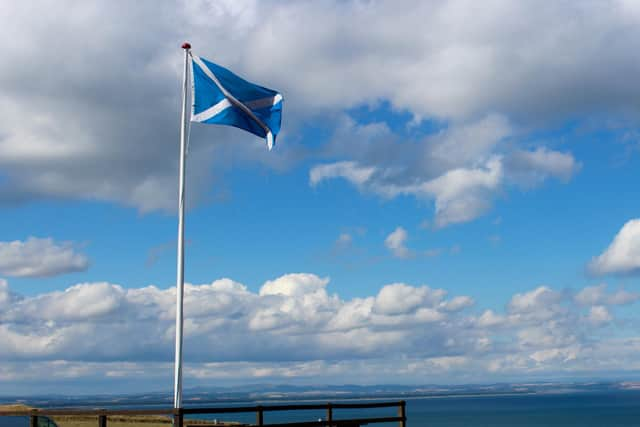Home of Scotland's flag flying high after £100,000 lift
and live on Freeview channel 276
Now the Flag Heritage Centre in the East Lothian village of Athelstaneford has opened its doors once again following a £100,000 award to help it share the village’s claim as the birthplace of the Saltire.
The centre tells the story of the Saltire becoming the national flag following the victory of the Picts and Scots at the Battle of Athelstaneford in 832 over a much larger force of Angles and Saxons.
Advertisement
Hide AdAdvertisement
Hide AdThe £100,000 award from Historic Environment Scotland (HES) has allowed Scotland's Flag Trust to restore its home in a 16th-century doocot to unravel the story of the Saltire, said to be the oldest flag in Europe and the Commonwealth, long into the future.
Megan Leishman, grants manager at Historic Environment Scotland, said: “HES are delighted to have been able to support the Scottish Flag Trust in their repair of the Hepburn doocot and hope that many more people will be able to visit and enjoy this important national site for years to come”
According to accounts, the battle took place when an army of Picts, led by Angus mac Fergus, High King of Alba and aided by a contingent of Scots, embarked on a punitive raid on Lothian – then Northumbrian territory.
After being pursued by a force of Angles and Saxons under Athelstan, the scene was set for battle when the Picts and Scots were surrounded near Markle, near East Linton.


Advertisement
Hide AdAdvertisement
Hide AdThe tradition continues that ahead of battle, Angus led prayers for deliverance and saw a a cloud formation of a white saltire, the diagonal cross on which St Andrew had been martyred, against a blue sky.
The king vowed that if he claimed victory, then Andrew would become the patron saint.
The Scots won, Athelstan died and St Andrew became the patron saint, although decades later when Kenneth mac Alpin, King of Scots, who may have been present with his grandfather at the battle, later united Picts and Scots and created Scotland.
Centuries later, the Saltire began to appear as a flag or banner.
Advertisement
Hide AdAdvertisement
Hide AdIn 1385, as the Scots prepared to invade England, the Scottish Parliament decreed that ‘every man shall have a sign before and behind, namely a white St Andrew’s Cross, and if his coat is white he shall bear the same white cross on a piece of black cloth’.
Later, a white saltire on a blue field appeared on an elaborate banner, the Blue Blanket, given in 1482 by James III to the incorporated trades of Edinburgh, and said to have been carried as a battle flag at the Battle of Flodden.
By the 16th century the Saltire was firmly established as the national flag, although its use declined following the 1707 Act of Union before it emerged once again in the 20th century and was adopted as the Scottish Government logo.
Today, the flag flies all year round from the Saltire Memorial in Athelstaneford parish churchyard to celebrate the village’s connection to the flag.
David Williamson, chair of the Scottish Flag Trust, said: “This has been a major project and [it’s] great to see the building restored and looking its best.”
Comment Guidelines
National World encourages reader discussion on our stories. User feedback, insights and back-and-forth exchanges add a rich layer of context to reporting. Please review our Community Guidelines before commenting.
